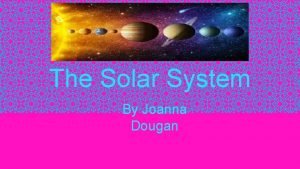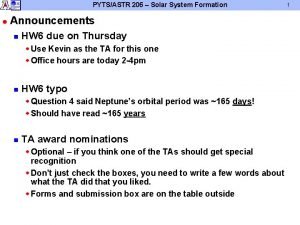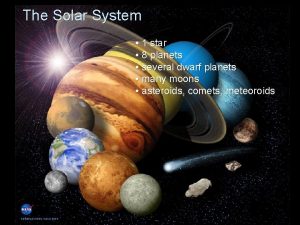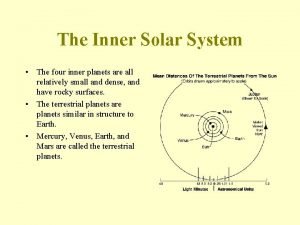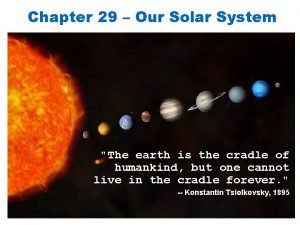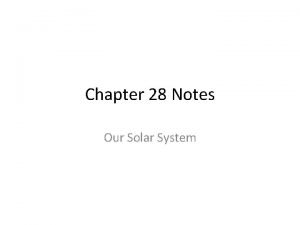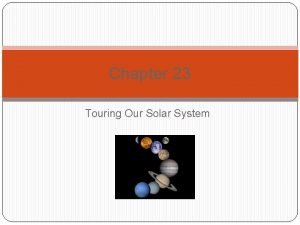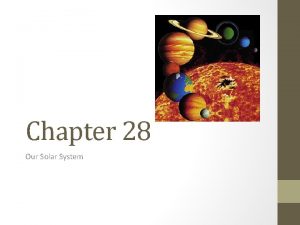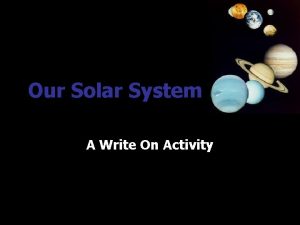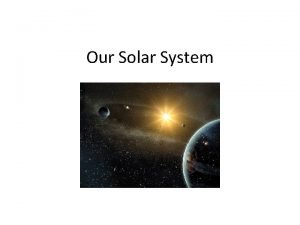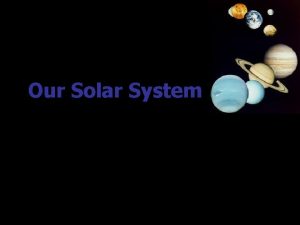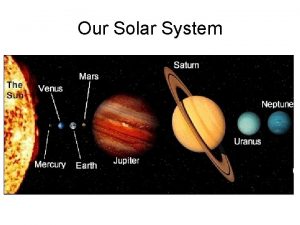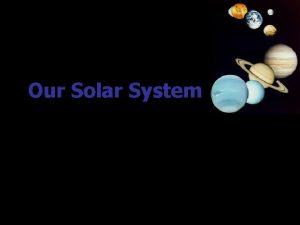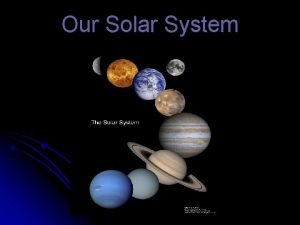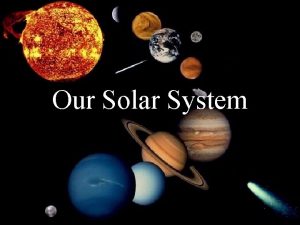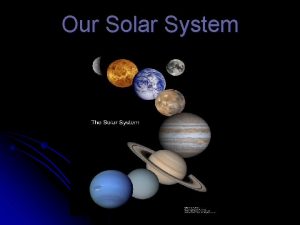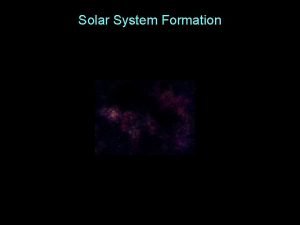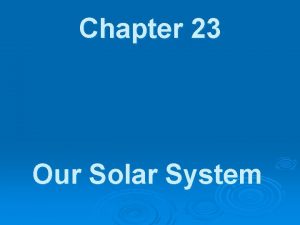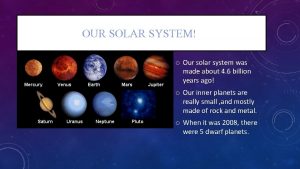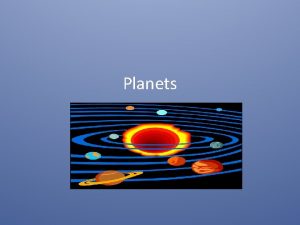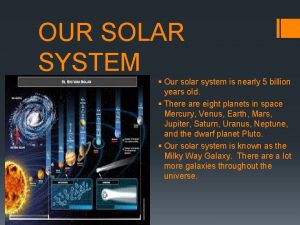Our Solar System Formation of a solar system


















- Slides: 18

Our Solar System

Formation of a solar system according to the Big Bang Theory

Nebula • 62)The dust and gas clump together in huge interstellar clouds called nebulas (or nebulae),

Solar Nebula • A nebula that has collapsed inward from its own gravity • Under great pressure the gas ignites and begin to burn • A star is born • Solar Nebula is a nebula with a star

Planets Form • Because of their greater gravitational attraction, the largest planetesimals begin to collect more and more of the dust and gas of the solar nebula.

Planetesimals The star in the nebula causes the remaining gas and dust to swirl around These gases and dust also colloid and form small group of matter called Planetesimals

Solar System Crash • Smaller planetesimals collide with the larger ones, and planets begin to grow.

Dangerous earlier Solar System • Smaller planets, comets and asteroids continue to crash into larger planets

Solar System has been formed

23)The planets of our solar system differ in size, composition (rock or gas), surface and atmospheric features, and distance from the sun. 24)Planets move around the sun in nearly elliptical (circular type) orbits.

25)The sun is a medium-sized star located near the edge of the Milky Way Galaxy. 26)The planets are divided into two groups. The inner planets are smaller, closer to the sun, and have rocky surfaces, while the outer planets are larger, farther from the sun and do not have solid surfaces.

27)Our solar system is a single star system, located in the Milky Way Galaxy. 28)The Big Bang Theory states the solar system is about 4. 6 billion years old.

What we are compared to other solar systems

Here is Earth compared to the inner planets plus the dwarf planet Pluto

Here is Earth and the other inner planets compared to the outer planets.

Our planets compared to our sun

Our sun compared to other suns

Still, other suns
 Nebular theory comic strip
Nebular theory comic strip Formation of the solar system
Formation of the solar system The formation of the solar system
The formation of the solar system Gas planets
Gas planets The four inner planets
The four inner planets Chapter 29 our solar system
Chapter 29 our solar system Chapter 28 our solar system
Chapter 28 our solar system Chapter 23 touring our solar system
Chapter 23 touring our solar system Chapter 28 our solar system
Chapter 28 our solar system Solar system planets
Solar system planets [email protected]
[email protected] Our solar system
Our solar system Formation initiale vs formation continue
Formation initiale vs formation continue Thinking language and intelligence
Thinking language and intelligence Our census our future
Our census our future Christ, be our light
Christ, be our light Our life is what our thoughts make it
Our life is what our thoughts make it We bow our hearts
We bow our hearts Our census our future
Our census our future
